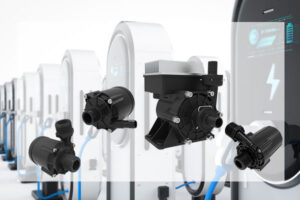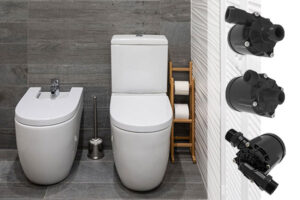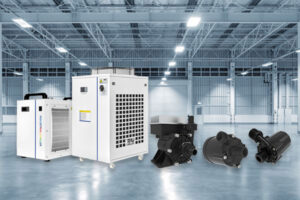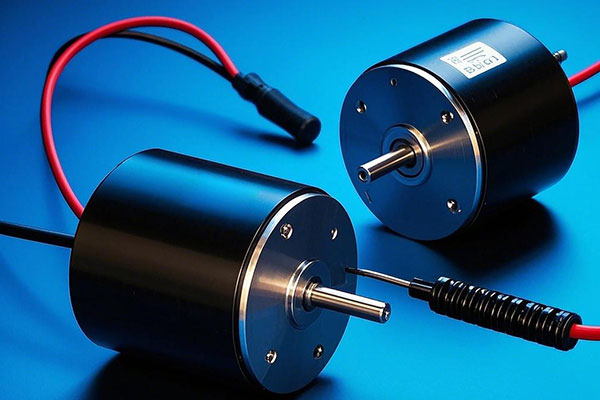In the world of cooling systems, efficient water pumps are critical. The rise of brushless DC (BLDC) water pumps in chillers has sparked a significant change in how we handle water circulation.
Brushless DC water pumps are gaining attention in chiller systems due to their energy efficiency and long lifespan. In this article, we will explore the role of these pumps and their advantages in chilled water applications1.
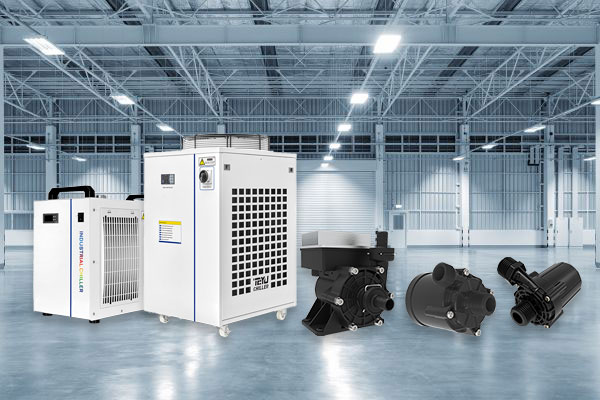
To better understand the role of BLDC pumps in chillers, let’s dive deeper into their functionality and the reasons why they are the preferred choice for many modern cooling systems.
What is the purpose of a DC water pump?
When it comes to modern pumps, DC-powered ones are standing out, especially in water circulation systems like chillers. But what exactly does a DC water pump2 do?
The purpose of a DC water pump is to circulate water efficiently and with minimal energy consumption. In chiller systems, it ensures that the cooling process is optimized for both performance and energy savings.
DC water pumps, specifically Brushless DC (BLDC) types3, are integral in systems where low power consumption and long operational life are critical. These pumps operate on direct current, allowing them to maintain a consistent flow rate without the inefficiencies associated with alternating current (AC) pumps. One of the most notable features of DC pumps is their precise control over speed, which can be adjusted according to the system's needs. This allows them to be more energy-efficient compared to traditional AC-powered pumps4, especially in applications like chillers where energy conservation is paramount.
In chiller systems, DC water pumps are used to circulate water through the cooling loop, ensuring that the heat exchange process is continuous and efficient. As temperatures rise in the system, the pump adjusts its speed to accommodate the increased demand for cooling, which further enhances the energy efficiency of the system. These pumps are especially valuable in industrial or commercial settings where the load on the cooling system may vary throughout the day, and where a constant, adjustable flow is necessary for optimal operation.
One of the most significant advantages of DC pumps is their brushless design. Traditional pumps use brushes that can wear out over time, leading to maintenance issues and reduced efficiency. In contrast, BLDC pumps eliminate this concern, offering a longer lifespan and lower maintenance requirements. For industries relying on chillers to maintain a specific temperature range, these attributes are game-changers. Furthermore, BLDC pumps often come with advanced control algorithms, enabling them to adapt in real-time to changes in system performance or external conditions.
What type of pump is used in the chilled water system?
Not all pumps are created equal. In chilled water systems, selecting the right type of pump is crucial for maintaining an efficient and reliable cooling process.
In chilled water systems, centrifugal pumps5 are most commonly used. However, with advancements, DC-powered pumps, especially BLDC types, are becoming more common due to their efficiency and reliability.
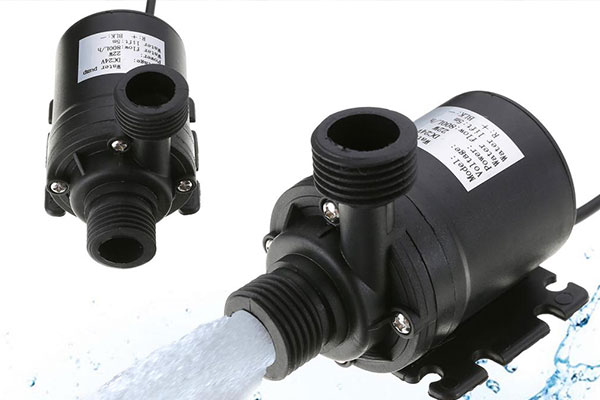
In traditional chilled water systems, centrifugal pumps are the most widely used. These pumps operate by using a rotating impeller to increase the velocity of water, which is then converted into pressure to circulate the water throughout the system. Centrifugal pumps are suitable for high-flow applications and are often employed in larger chiller systems because they can handle varying water volumes without significant losses in efficiency.
However, with the growing demand for energy-efficient solutions, many systems are now incorporating BLDC water pumps2. These pumps are being preferred in applications where energy consumption and maintenance are significant concerns. DC pumps, especially brushless types, are advantageous because of their ability to operate with variable speed controls6. This means that the pump can adjust its speed based on the cooling load, reducing energy consumption when the system doesn't require full capacity. This flexibility can lead to long-term cost savings, especially in commercial or industrial settings with fluctuating cooling demands.
The integration of BLDC pumps into chilled water systems also helps in reducing overall system noise. Traditional centrifugal pumps can be quite noisy, which is not ideal in environments that require a quiet operation, such as in office buildings or hospitals. On the other hand, BLDC pumps are much quieter, contributing to a more comfortable working environment.
What is the function of chiller water pump?
The chiller water pump plays a pivotal role in maintaining a consistent and effective cooling process. But what does it actually do?
The primary function of the chiller water pump is to circulate chilled water7 throughout the cooling system, ensuring continuous heat exchange8 and maintaining the desired temperature levels.

The function of the chiller water pump is central to the operation of any cooling system. In a chiller, water is used as a heat transfer medium to absorb heat from the air or the equipment that needs cooling. The water is chilled to a specific temperature by the chiller unit and then circulated through the cooling loop. The pump ensures that this chilled water is consistently circulated, maintaining a constant temperature in the system and facilitating efficient heat exchange.
Without a functioning chiller water pump, the cooling process would not be able to operate efficiently. The pump is responsible for the movement of water through the chiller's evaporator and condenser coils, where heat is either absorbed or released. If the water doesn't flow consistently or with enough pressure, the heat exchange process becomes inefficient, and the chiller system could struggle to maintain the desired temperature. This can lead to increased energy usage and higher operating costs.
In traditional setups, centrifugal pumps were the go-to solution. However, as we move towards more energy-efficient and automated systems, DC pumps are becoming more common. These pumps provide a greater level of control over water flow, which is essential for maintaining efficiency in systems where load conditions may fluctuate throughout the day. Moreover, the energy savings associated with BLDC pumps can be significant, especially in large, complex chiller systems.
How does a DC water pump work?
You’ve heard of DC water pumps, but how exactly do they work? Let’s break down their inner workings and explore the mechanisms that make them so efficient.
DC water pumps work by using direct current to power the motor, which drives the impeller9 to circulate water. The lack of brushes in a BLDC motor results in greater efficiency and reduced maintenance.
A DC water pump operates by converting electrical energy from a DC source (usually a battery or power supply) into mechanical energy to drive a motor. The motor's rotation then powers an impeller, which moves water through the system. In the case of a brushless DC (BLDC) pump, the design eliminates brushes that are typically found in traditional motors. This design leads to several benefits, including higher efficiency, less wear and tear, and a longer lifespan.
The absence of brushes is crucial because brushes in traditional motors can wear down over time, requiring regular maintenance and replacement. BLDC motors, however, are designed to be more durable and operate with less friction, resulting in a smoother, quieter operation. This makes BLDC pumps ideal for continuous operation in systems like chillers, where reliability is a key factor.
One of the major advantages of BLDC pumps in chiller systems10 is their ability to adjust speed based on system needs. Unlike traditional pumps, which operate at a fixed speed, BLDC pumps can vary their speed in response to changes in demand, thus optimizing energy consumption. This feature helps in reducing the overall power usage, especially when the cooling load is low.
What is the difference between BLDC water pump and normal water pump?
Are BLDC water pumps really that different from traditional water pumps? Let's compare the two and highlight their main differences.
BLDC water pumps differ from normal water pumps mainly in their motor design. BLDC pumps are more energy-efficient, quieter, and require less maintenance compared to traditional pumps with brushed motors.
The primary difference between BLDC water pumps and traditional water pumps lies in the motor technology. Traditional water pumps typically use brushed motors, where brushes make physical contact with the motor's commutator to transfer electricity. Over time, these brushes can wear out, which increases maintenance costs and reduces the efficiency of the pump. In contrast, BLDC water pumps use brushless motors, which eliminates the friction and wear caused by brushes, leading to longer-lasting and more efficient pumps.
One key advantage of BLDC pumps is their ability to operate at varying speeds. Traditional pumps usually run at a constant speed, which can lead to inefficiencies when the system doesn't require full capacity. BLDC pumps, however, can adjust their speed depending on the demand for cooling, which makes them much more energy-efficient in dynamic systems like chillers.
Additionally, BLDC pumps are much quieter than traditional pumps. This can be especially important in environments where noise reduction is a priority, such as in hospitals or office buildings. The quieter operation of BLDC pumps helps to create a more pleasant and less disruptive environment.
My Experience
I’ve worked with a customer for many years who now sources water pumps from us. However, in the past, they made a purchase from a different supplier in China. They received a batch of pumps that, after testing, were found to have quality issues. They rejected the entire batch and returned the pumps. What happened next was shocking: the supplier fixed the pumps and sold them at a low price to another chiller manufacturer. Unfortunately, that manufacturer didn’t perform proper quality checks, and the pumps were installed in chillers that ended up causing massive failures at other factories. This resulted in the factory facing legal action and eventually going out of business. The lesson from this experience was painful but unforgettable. The quality of the water pump and its components is critical to the success of the entire chiller system.
At Herays, we take quality control seriously. Our engineers have more than 15 years of experience in the industry and are well-versed in the intricate demands of chiller systems. This expertise is reflected in our stringent quality management processes. We don’t just focus on the manufacturing phase; we ensure that every pump is rigorously tested before leaving the factory. From performance to durability, each pump undergoes thorough checks to guarantee that it meets international standards.
Furthermore, we understand that a product’s quality doesn’t stop at delivery. This is why we offer complete pre-sale and after-sale support. Our team works closely with customers to understand their specific needs and provides tailored solutions that maximize efficiency. Should any issues arise, our dedicated support team ensures that they are promptly addressed, providing peace of mind to our clients. With Herays, you don’t just get a product; you get a partnership built on reliability, quality, and continuous support.
We’re not just suppliers; we’re committed to helping our clients avoid costly mistakes and achieve optimal performance in their cooling systems. That’s why we focus on both product quality and customer satisfaction, ensuring that our pumps contribute to the long-term success of your operations.
Conclusion
Brushless DC water pumps are revolutionizing chiller systems by offering superior energy efficiency, reduced maintenance, and longer lifespans. As highlighted by my experience with quality issues in the past, choosing reliable pumps is critical for the success of a chiller system. By prioritizing quality and performance, industries can avoid costly mistakes and ensure long-term system efficiency.
-
Learn about the advantages of integrating brushless DC pumps in chilled water systems for improved performance and reliability. ↩
-
Exploring this link will provide insights into how DC water pumps enhance energy efficiency and performance in chiller systems, crucial for industries aiming for sustainability. ↩ ↩
-
This resource will explain the technological advancements of BLDC pumps, highlighting their longer lifespan and lower maintenance needs, essential for cost-effective operations. ↩
-
Understanding the energy efficiency of DC pumps over AC pumps can help in making informed decisions for energy conservation in cooling systems. ↩
-
Understanding the role of chilled water in HVAC systems can help optimize cooling efficiency and reduce energy costs. ↩
-
Exploring the concept of heat exchange can provide insights into improving system efficiency and performance. ↩
-
Understanding the role of chilled water in HVAC systems can help optimize cooling efficiency and reduce energy costs. ↩
-
Exploring the concept of heat exchange can provide insights into improving system efficiency and performance. ↩
-
Learn about the critical role of impellers in water circulation and how they contribute to the efficiency of DC water pumps. ↩
-
Explore the benefits of BLDC pumps in chiller systems, including energy efficiency and reliability, crucial for optimal performance. ↩

